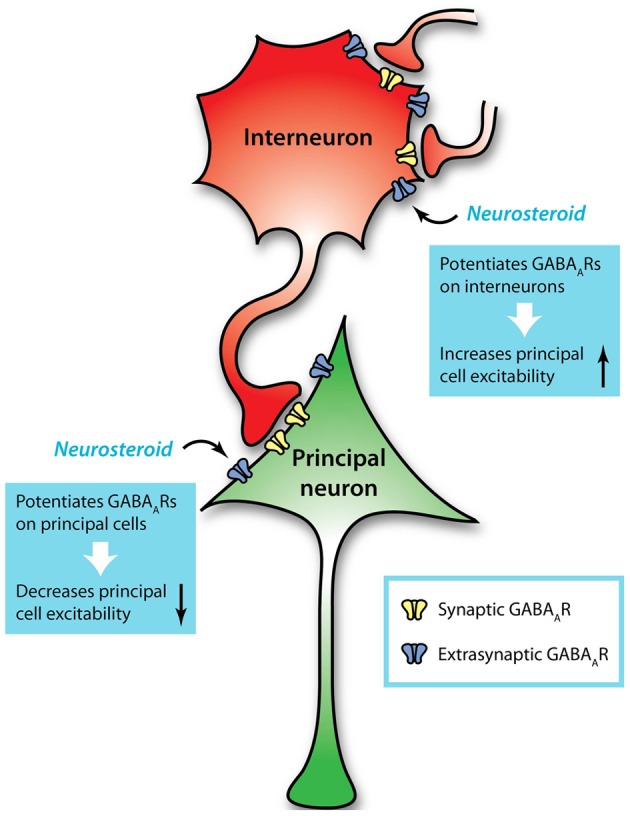Figure 1.

Extrasynaptic GABAARs mediate tonic conductances in principal neurons and interneurons. Interneurons regulate the activity of principal cells through GABAergic transmission, but are in turn regulated by GABAergic input from other interneurons. This additional level of GABAergic signaling introduces complexity to understanding neuronal excitability and its modulation. For example, neurosteroids can act on GABAARs, especially extrasynaptic receptors that contain a δ subunit, to potentiate GABAergic inhibition on principal neurons and diminish their excitability. Simultaneously, neurosteroids can potentiate GABAergic inhibition on interneurons, thus disinhibiting the principal neurons and enhancing their excitability. These opposing effects, combined with the variability in GABAergic inhibition across cell types and brain regions, present complications when considering GABAARs as therapeutic targets.
